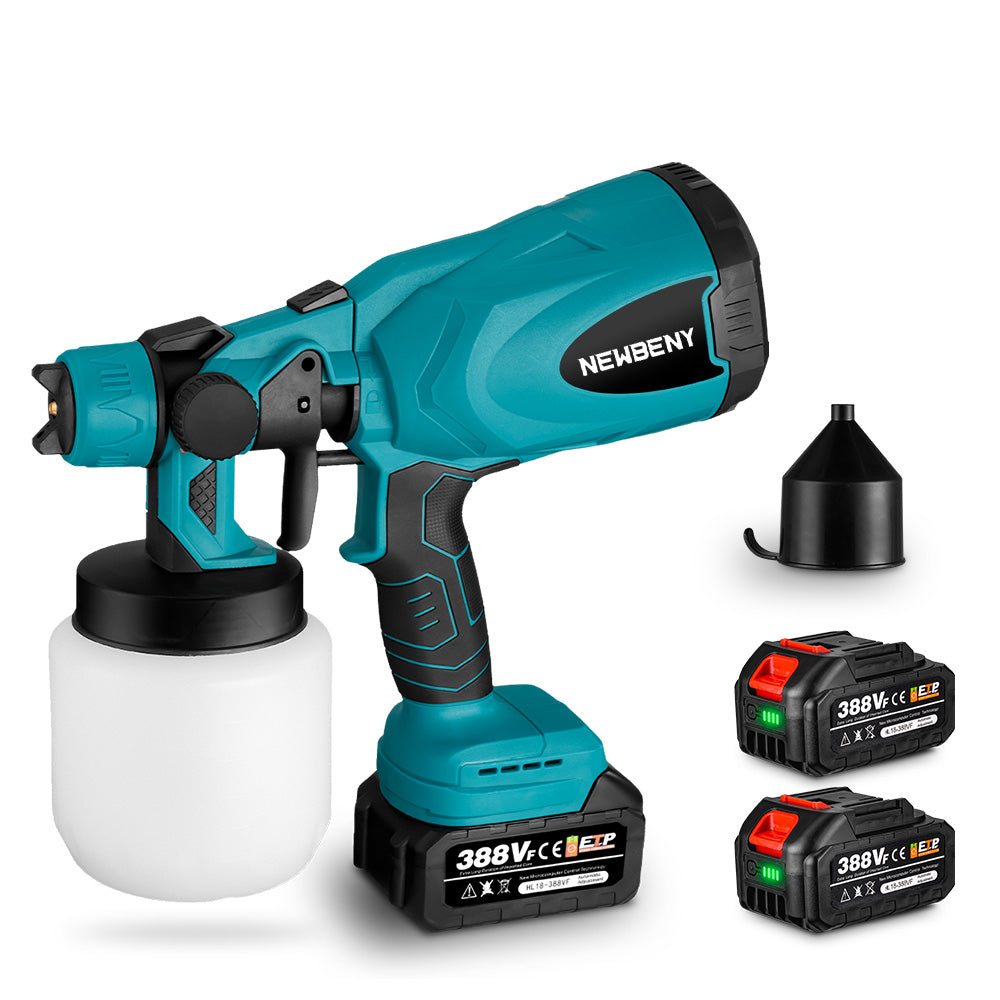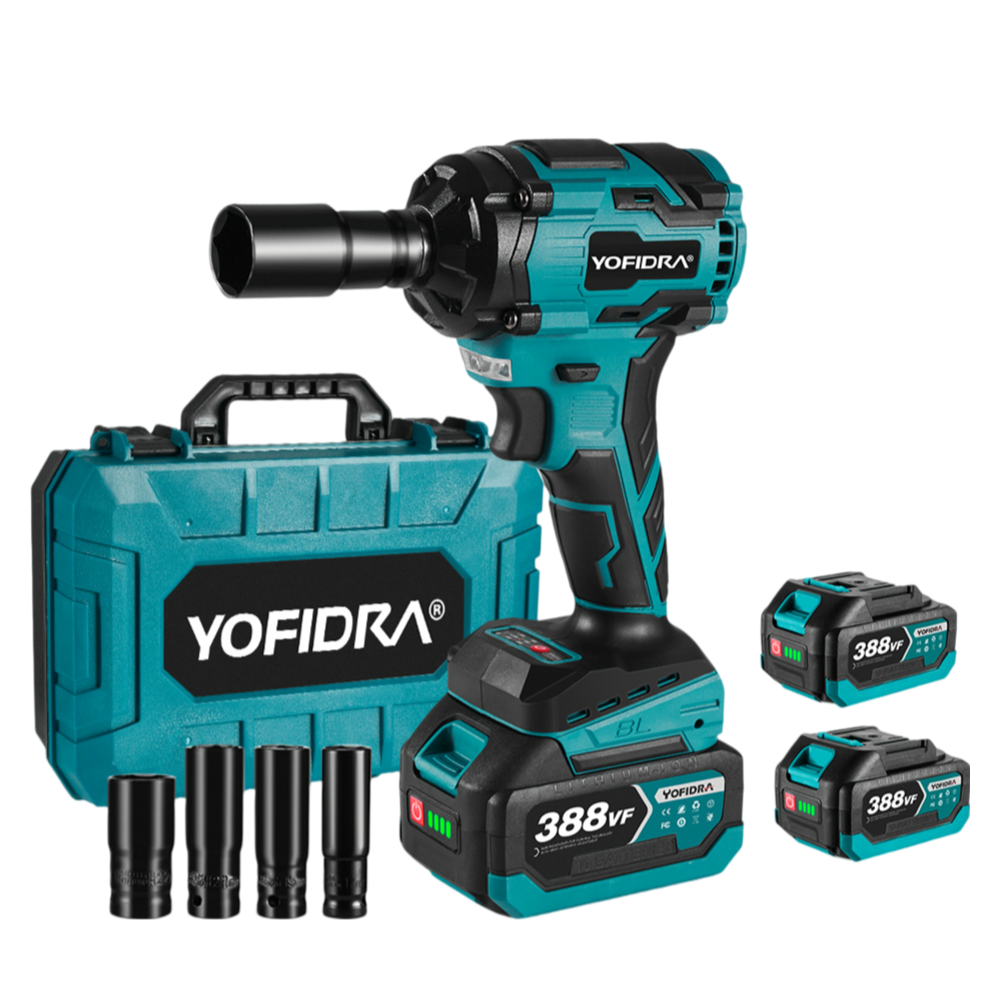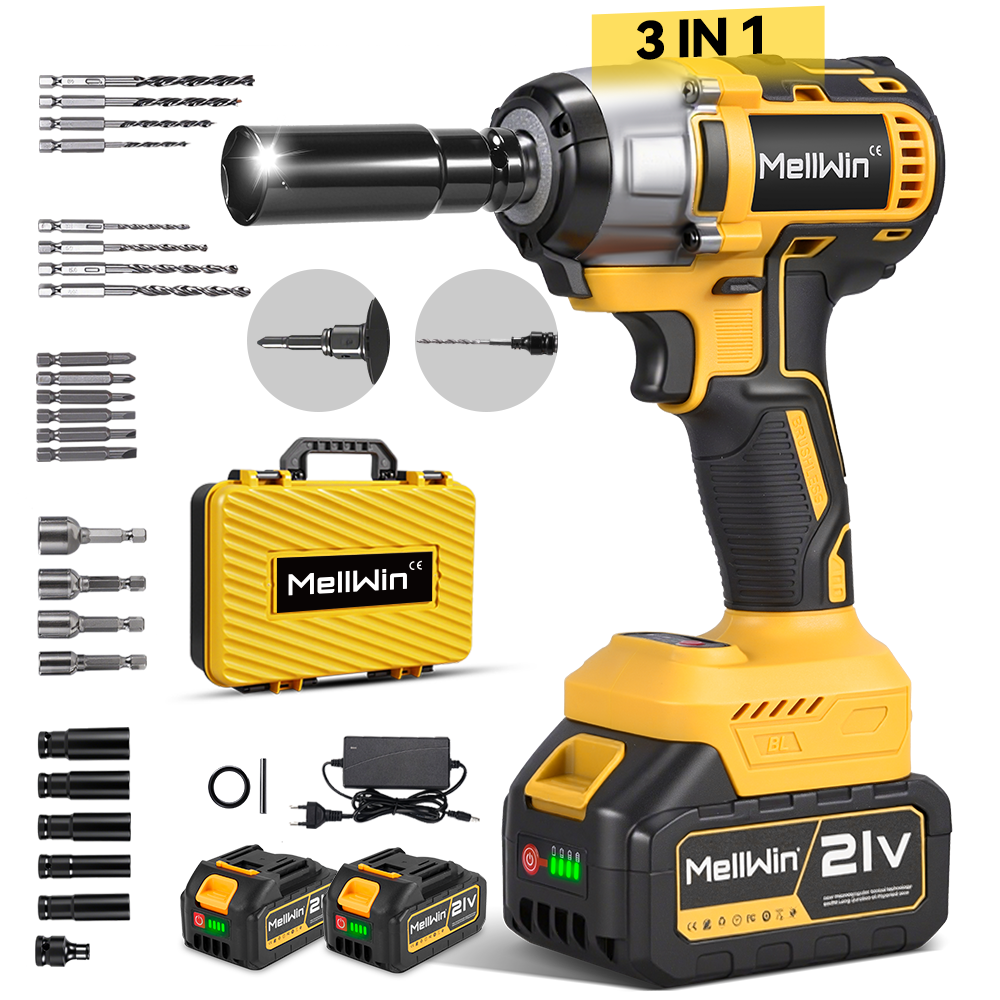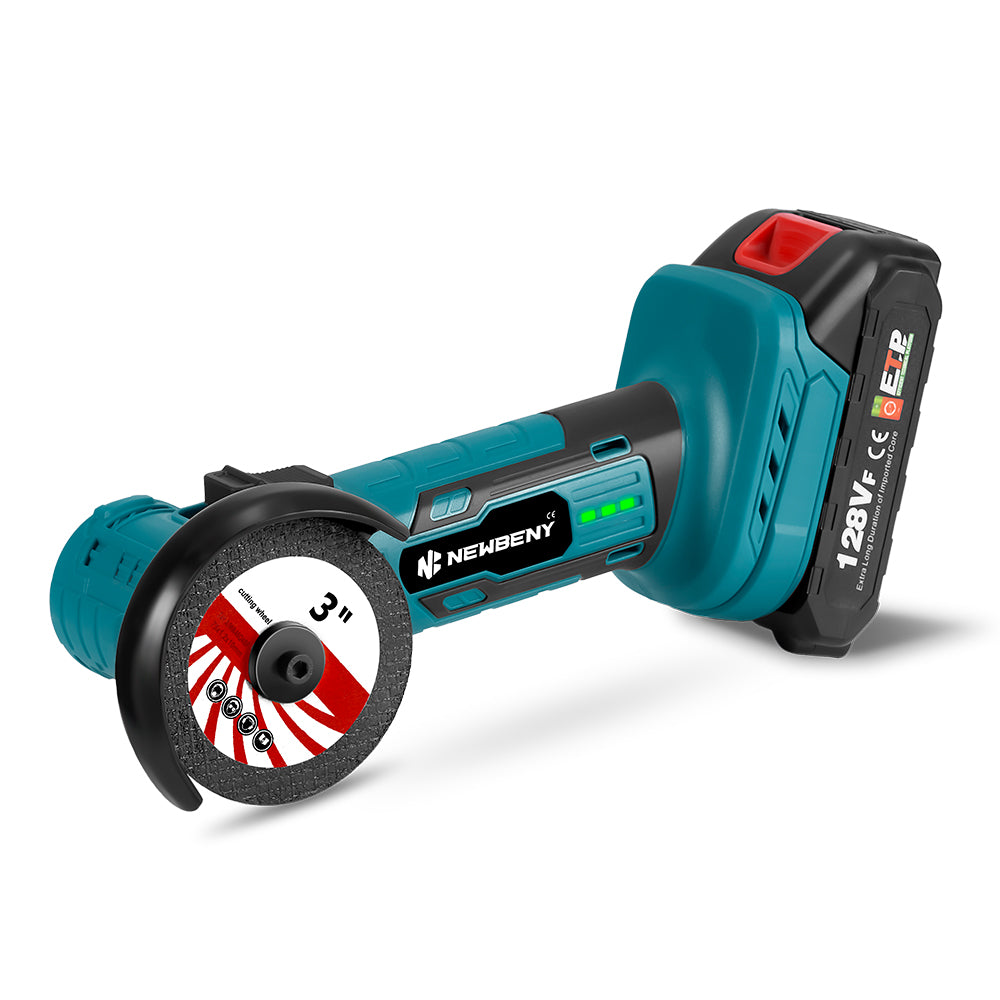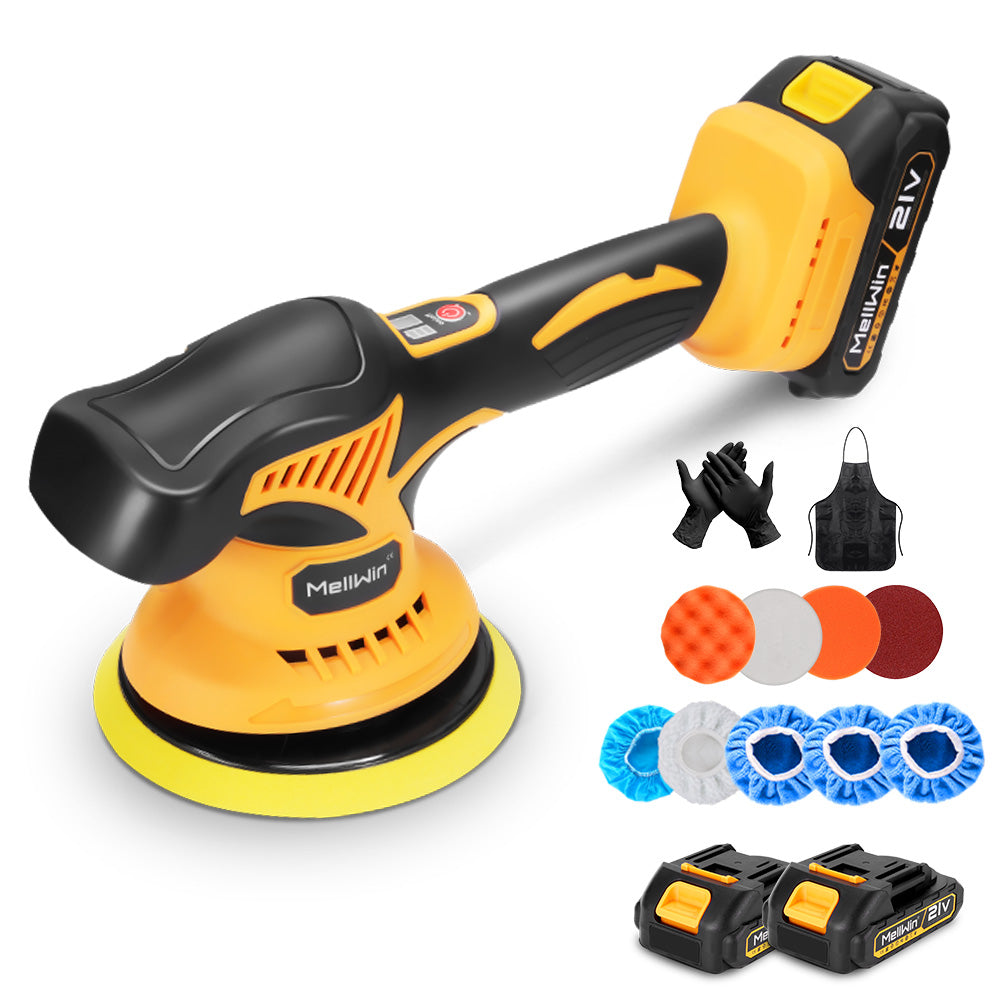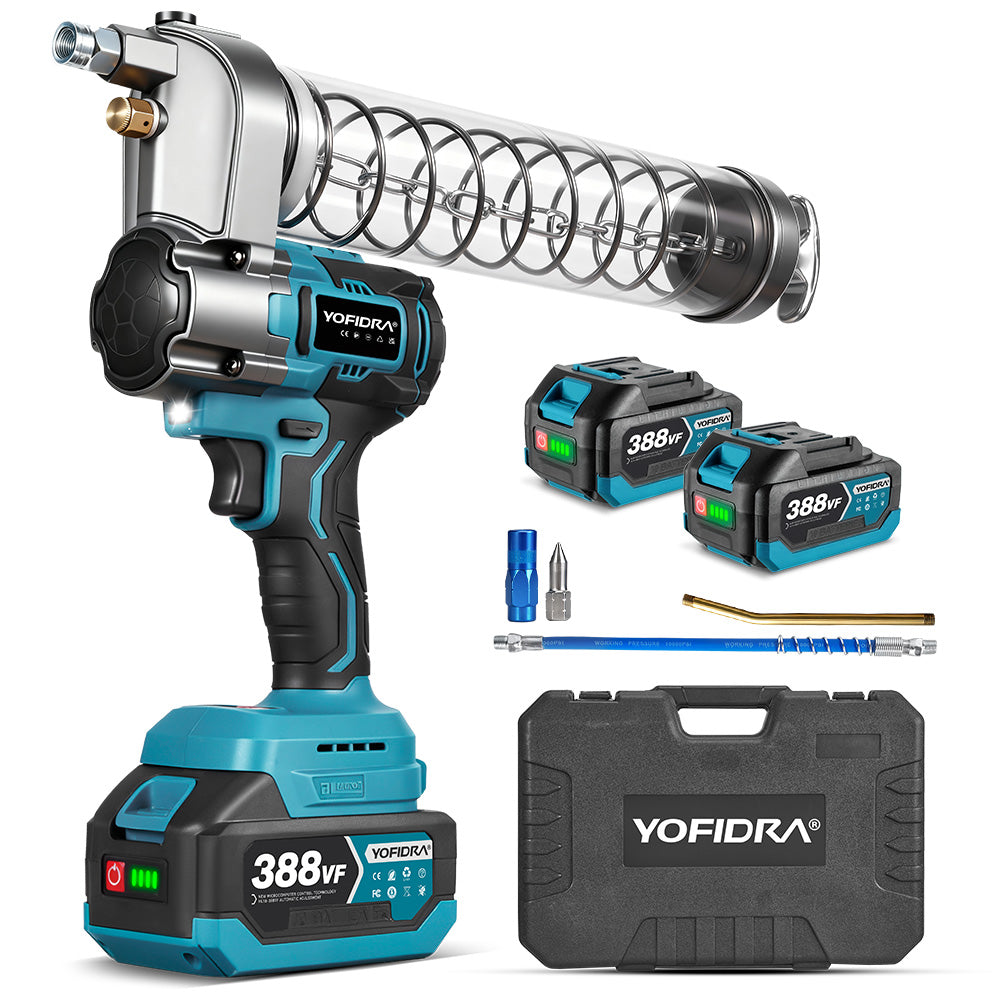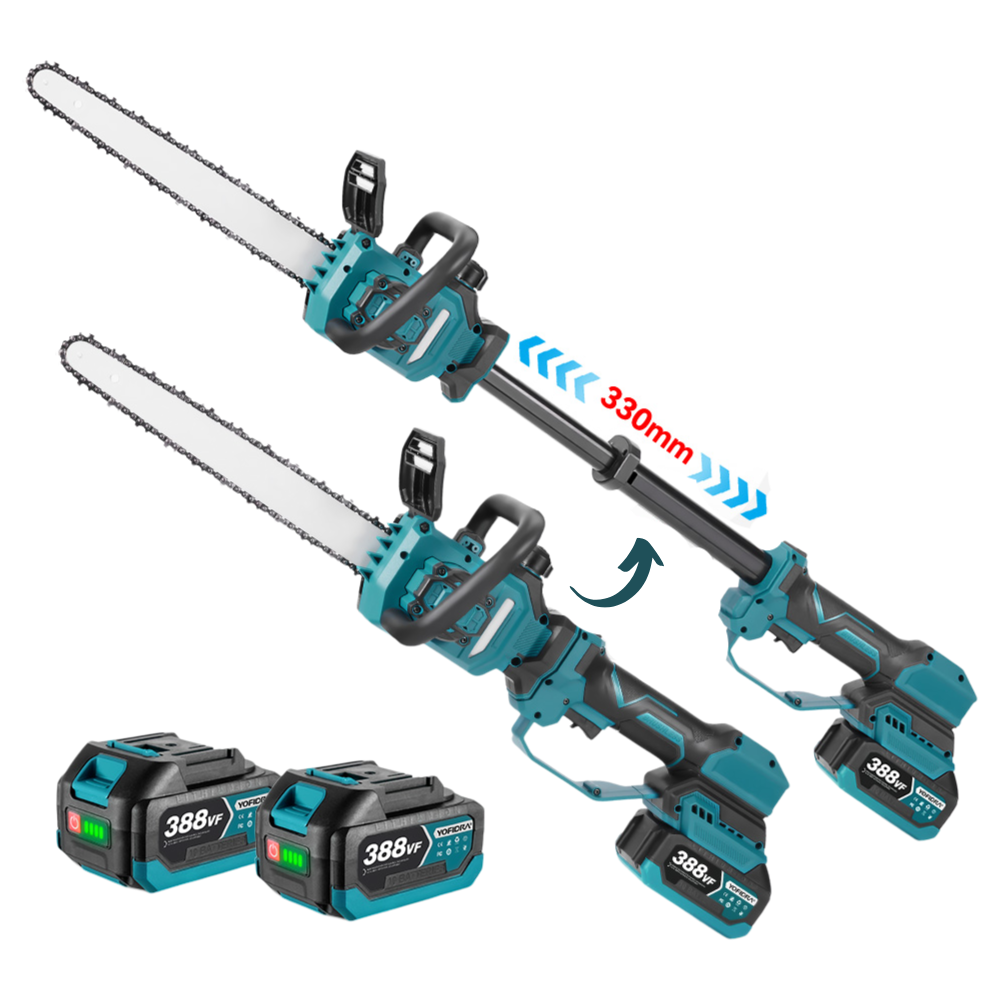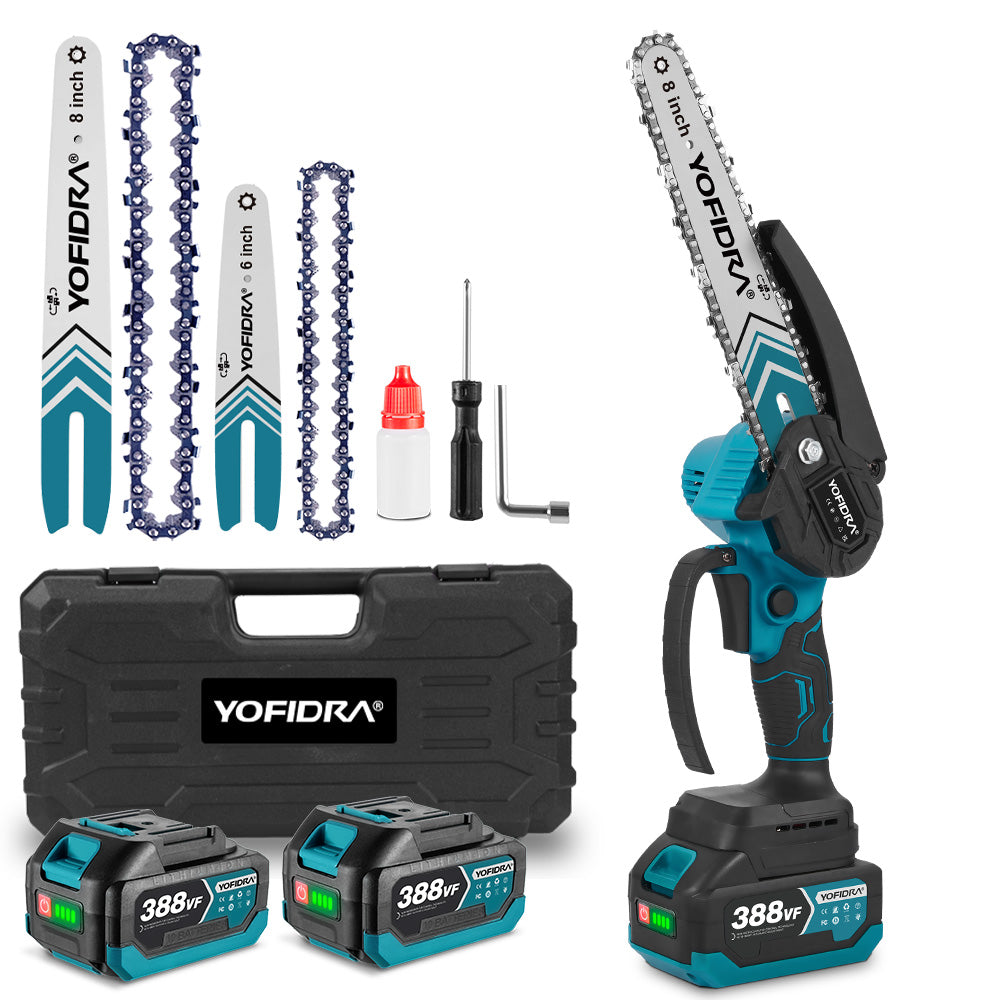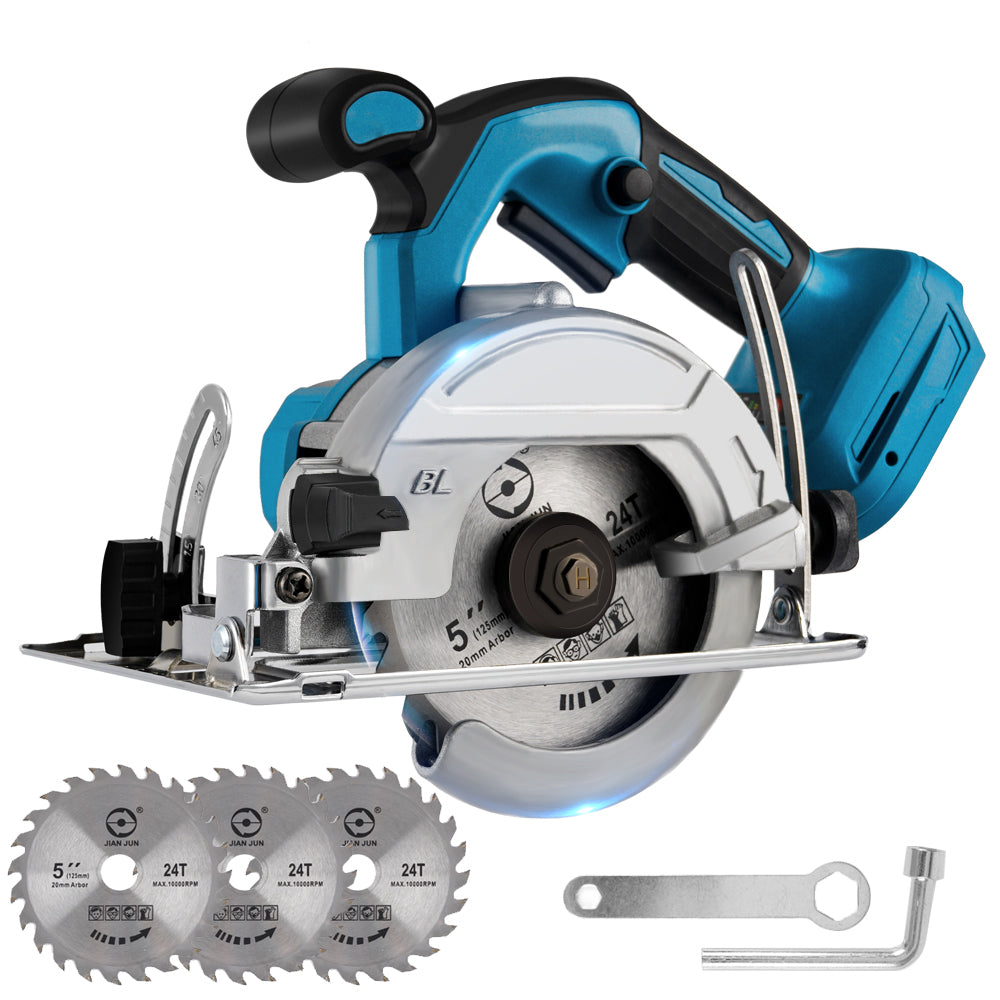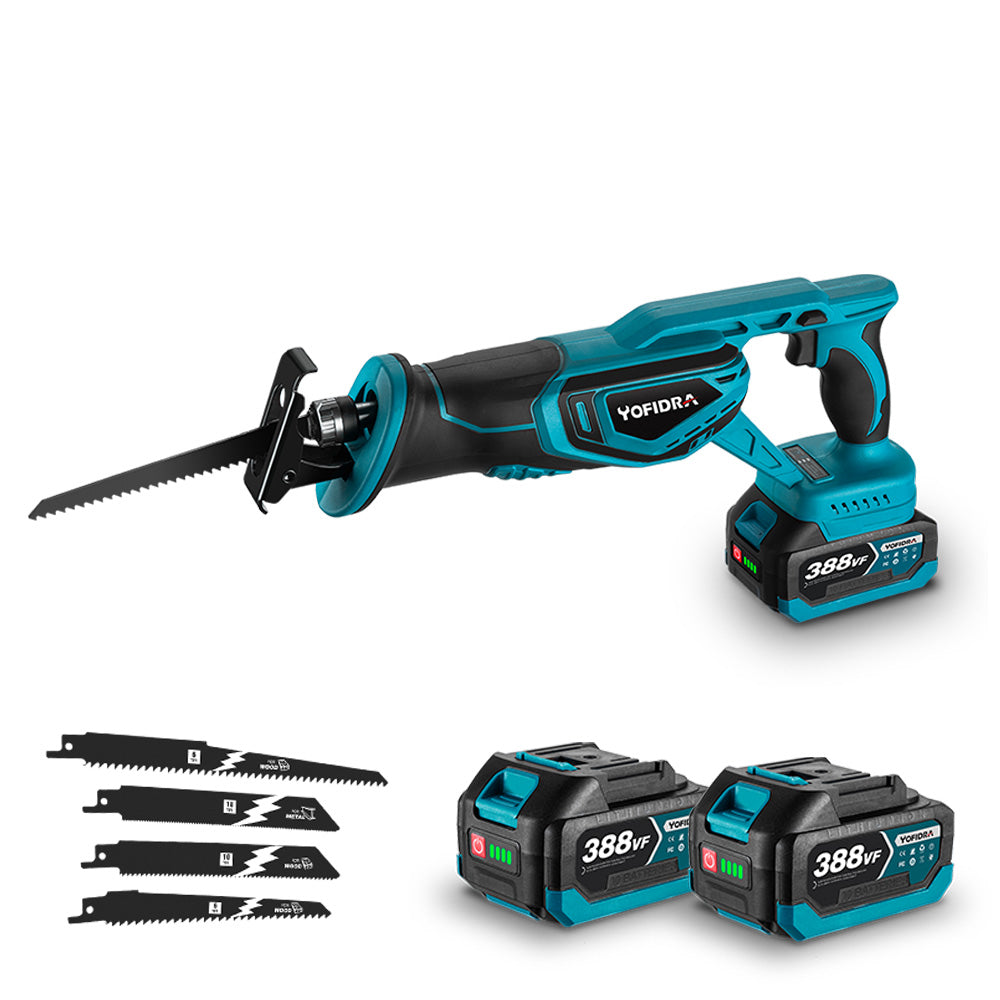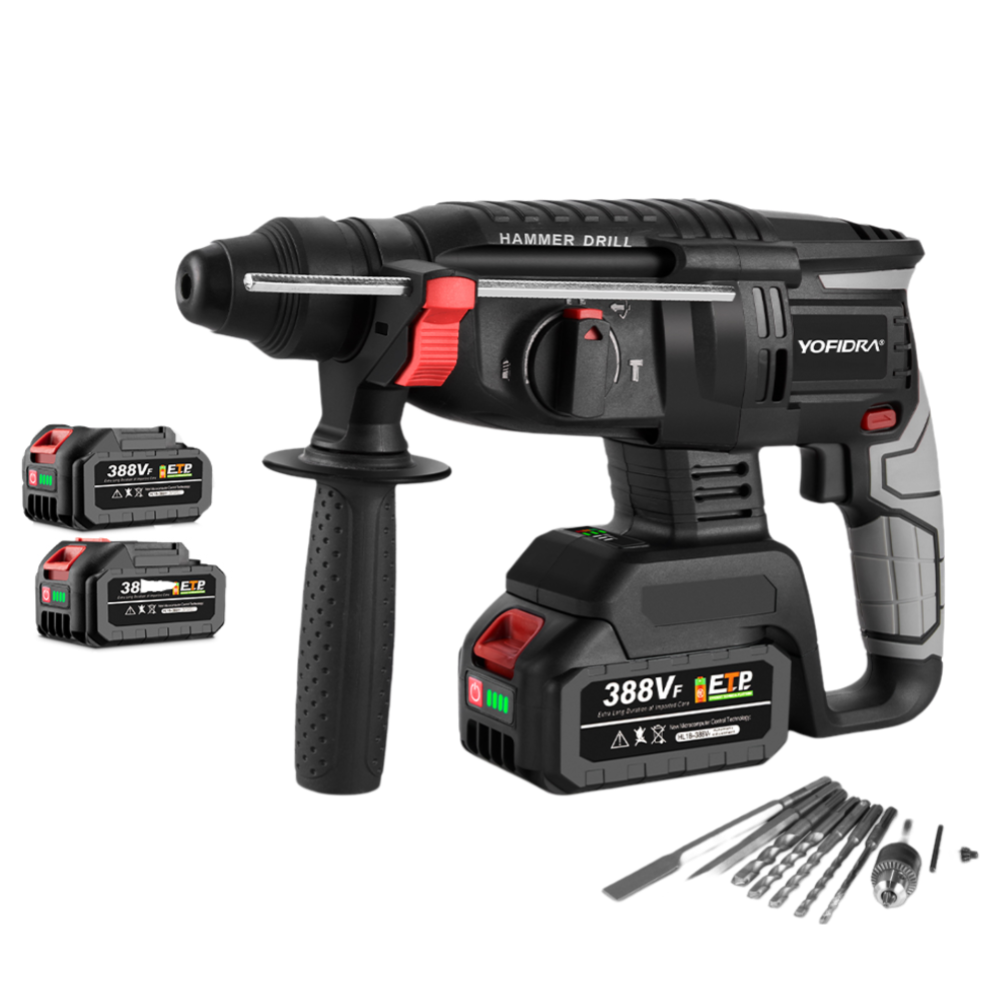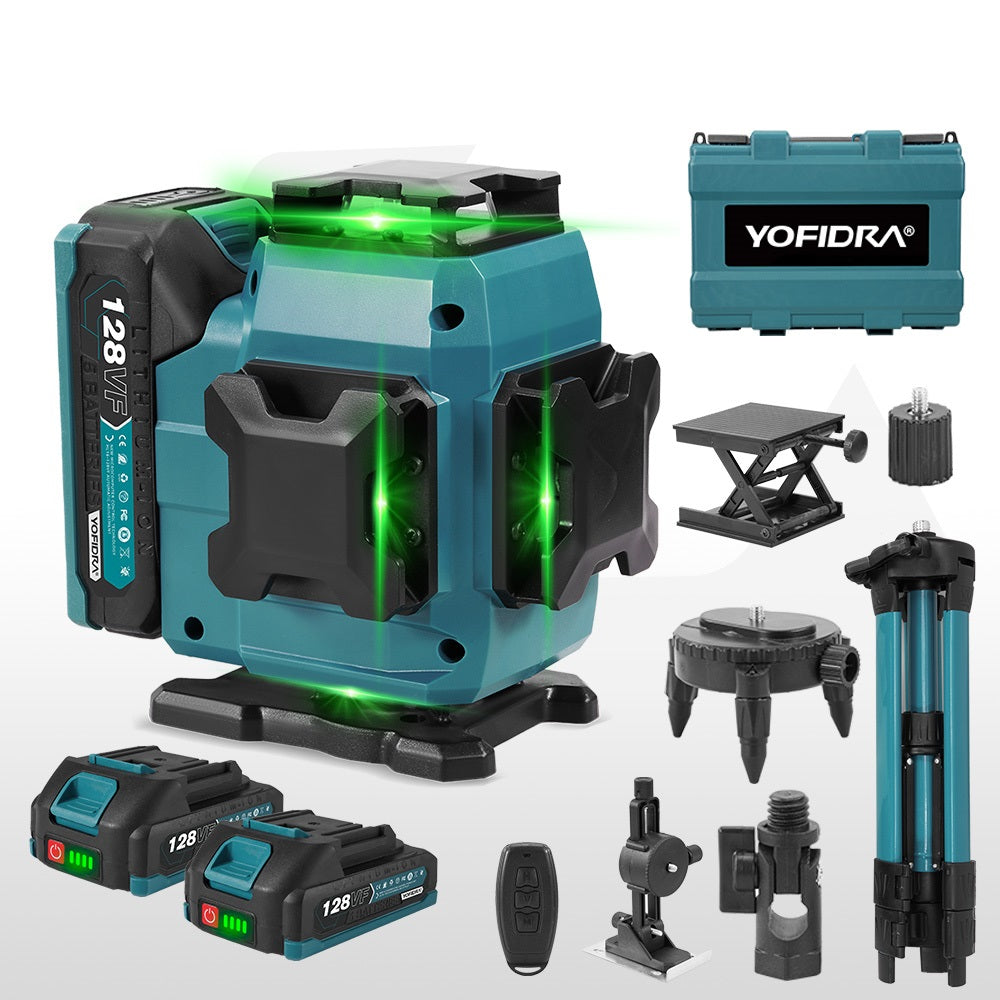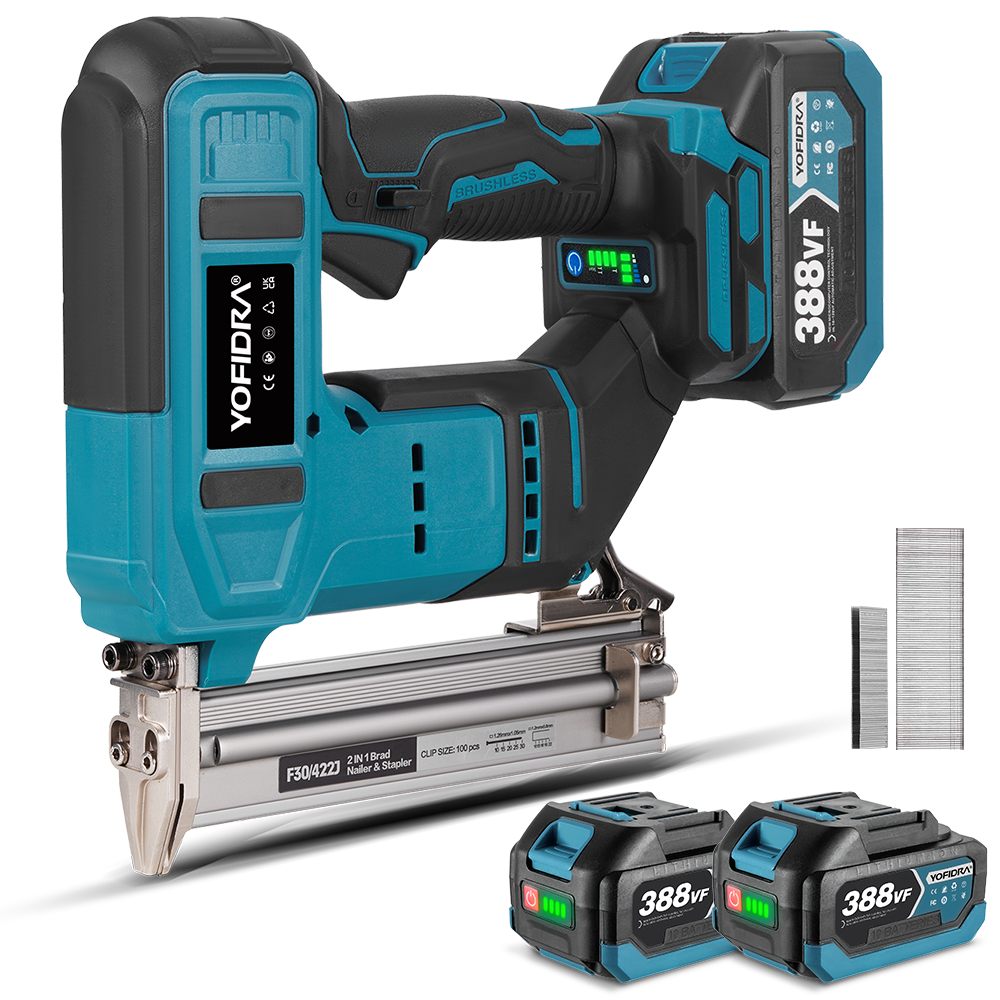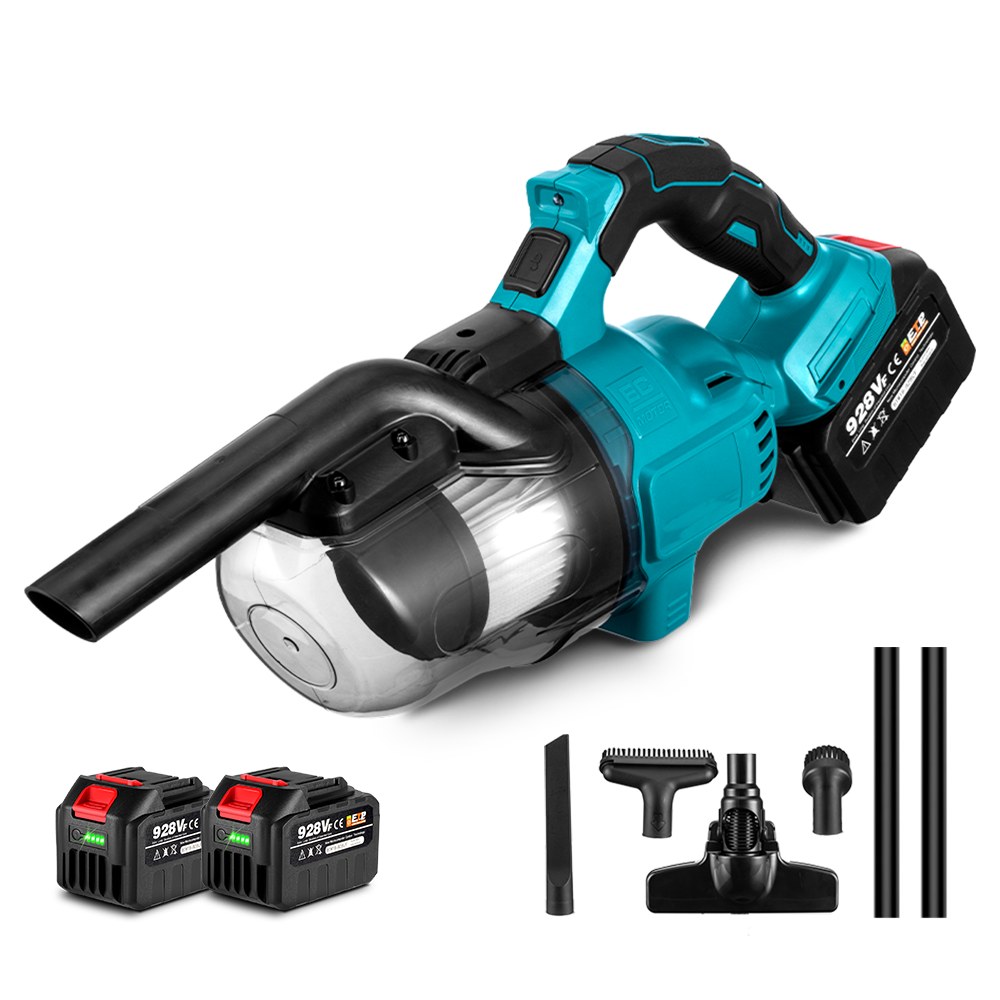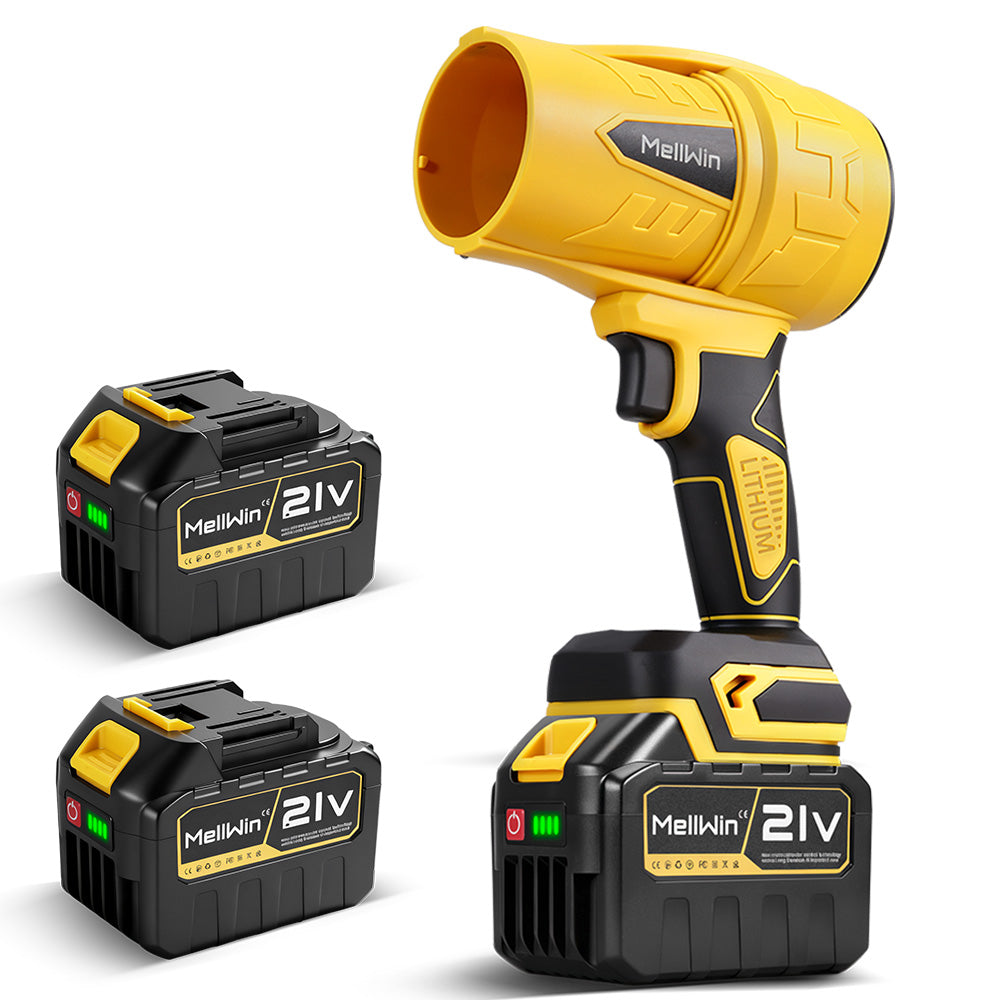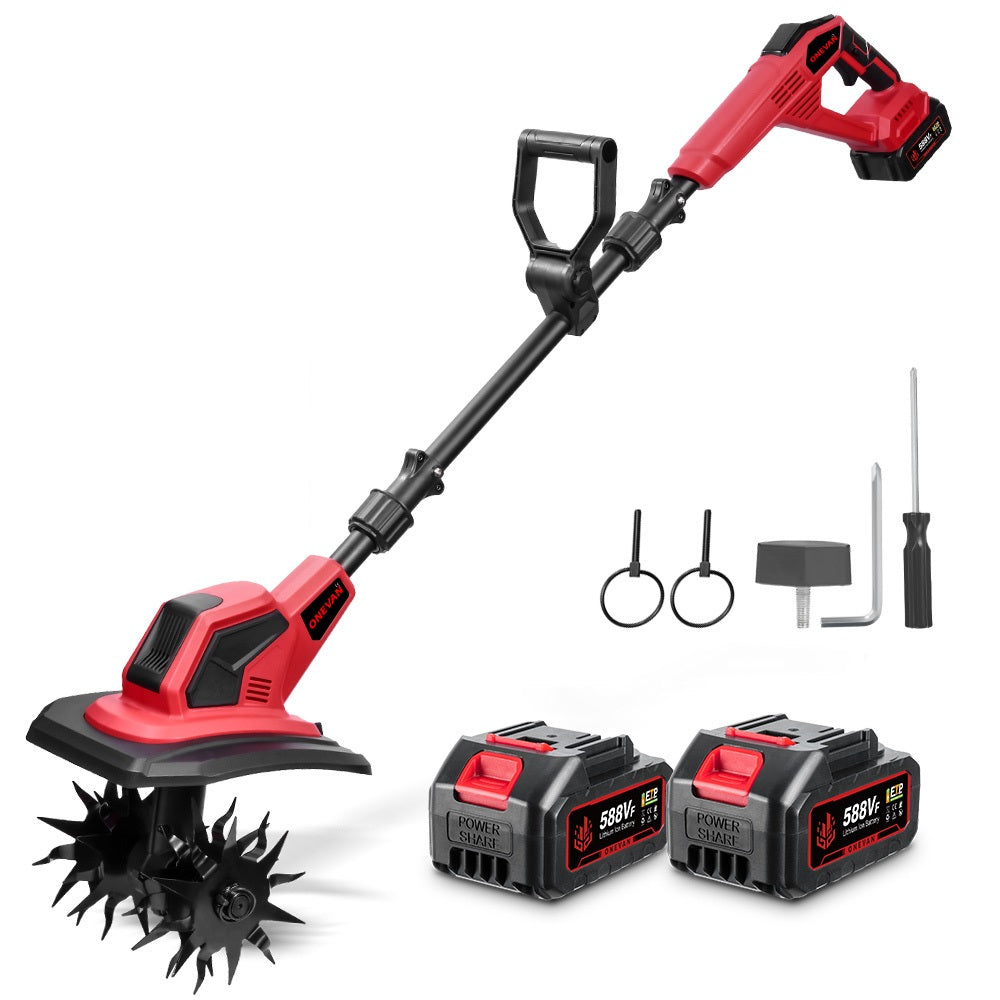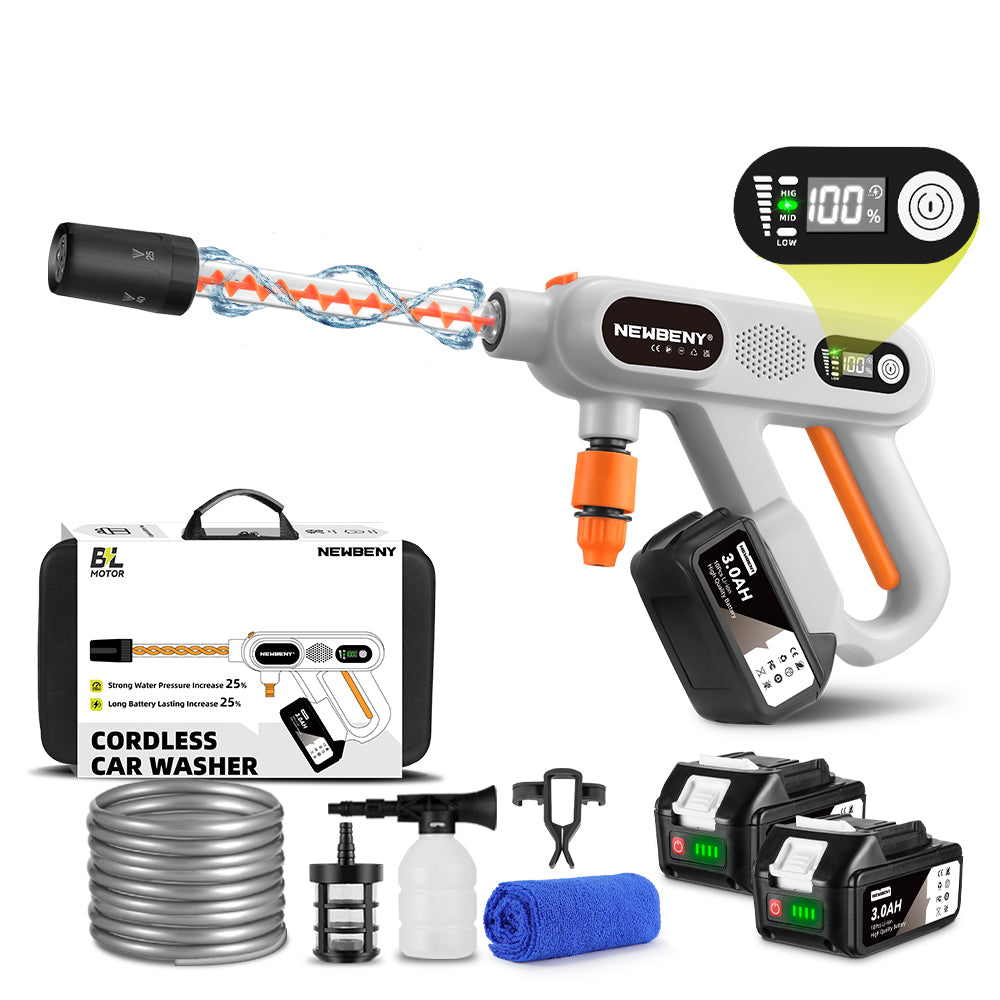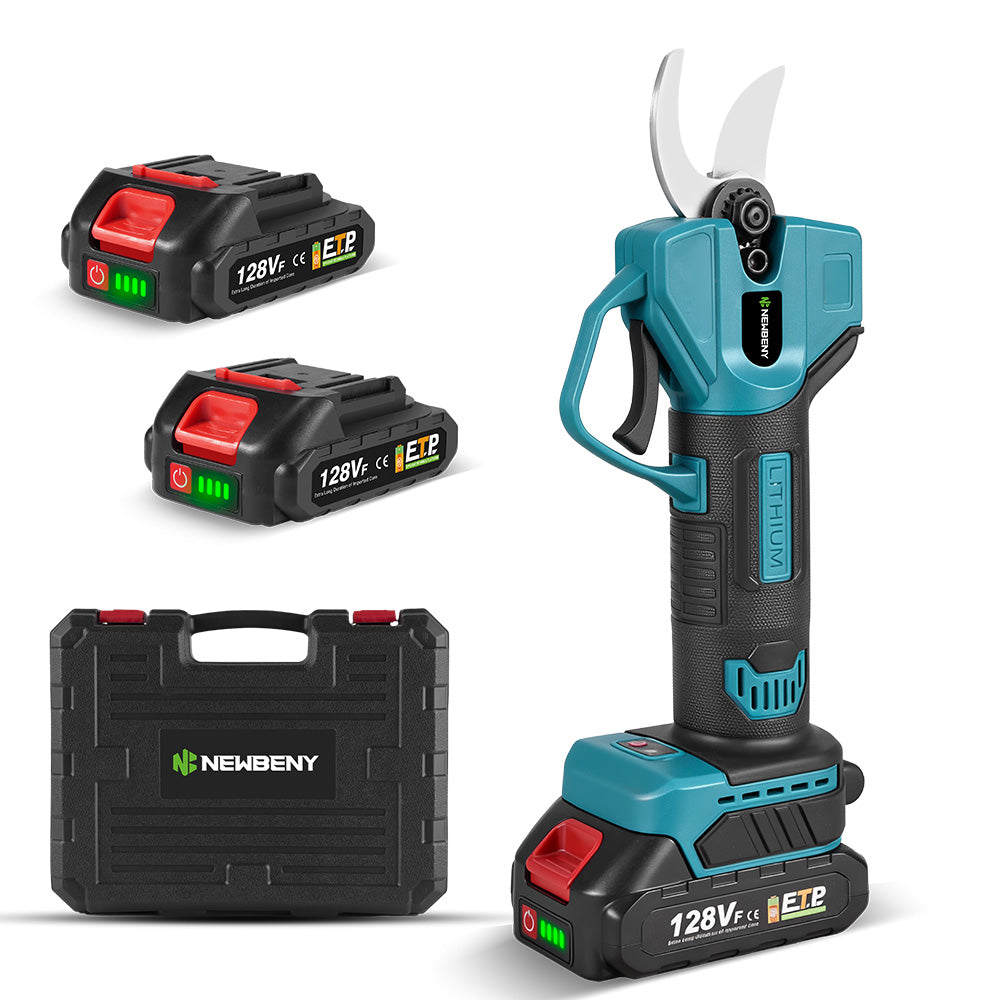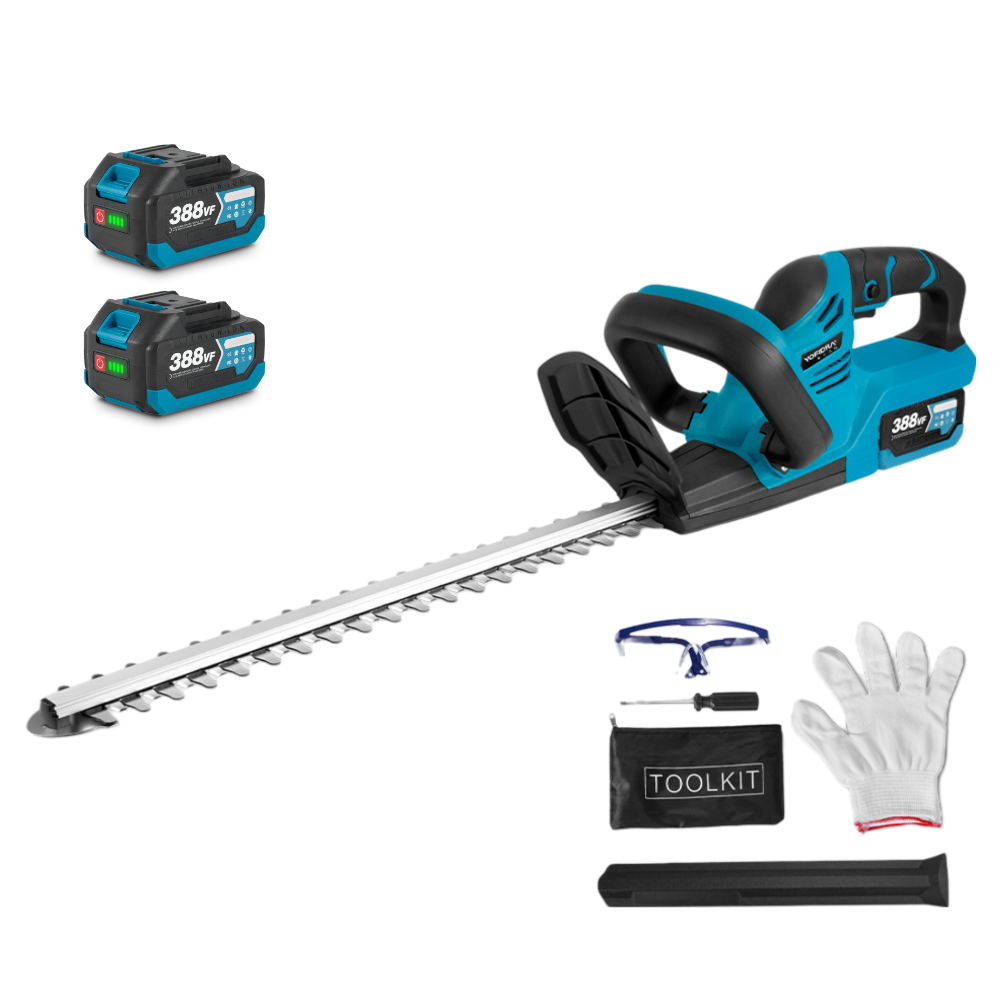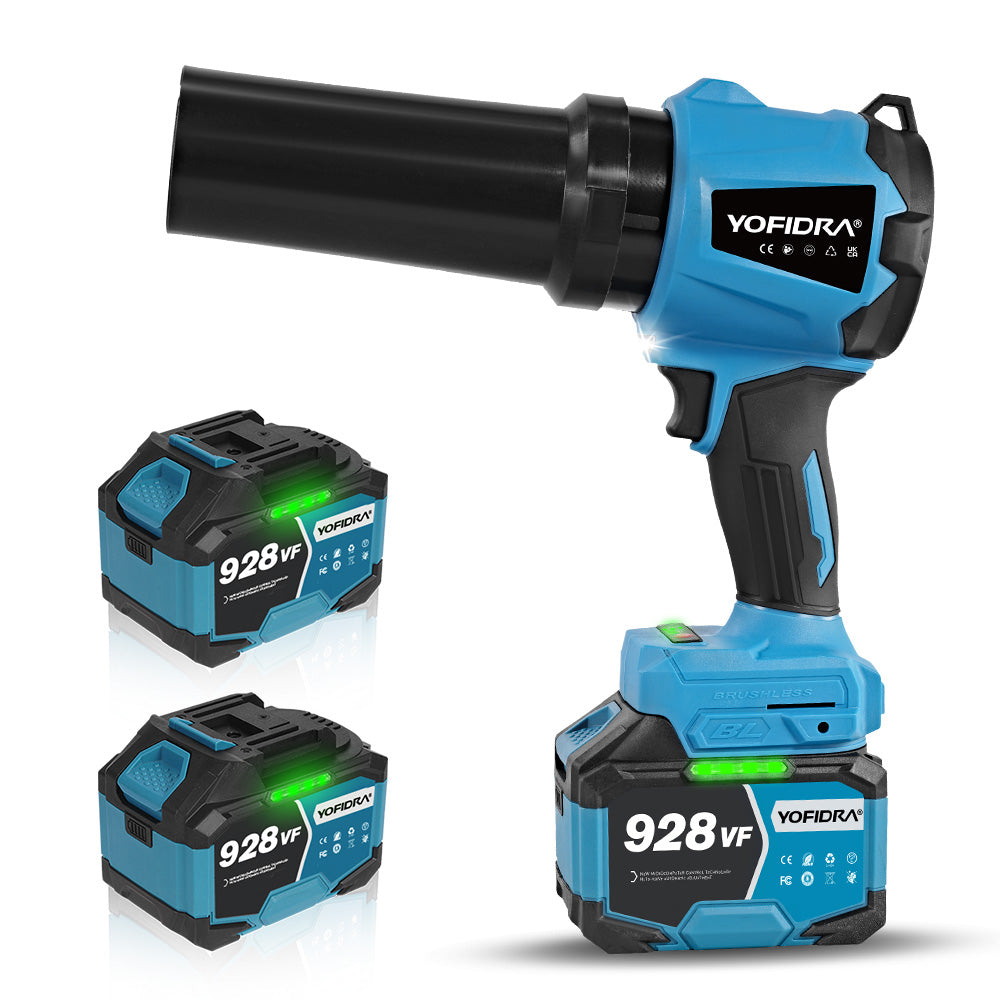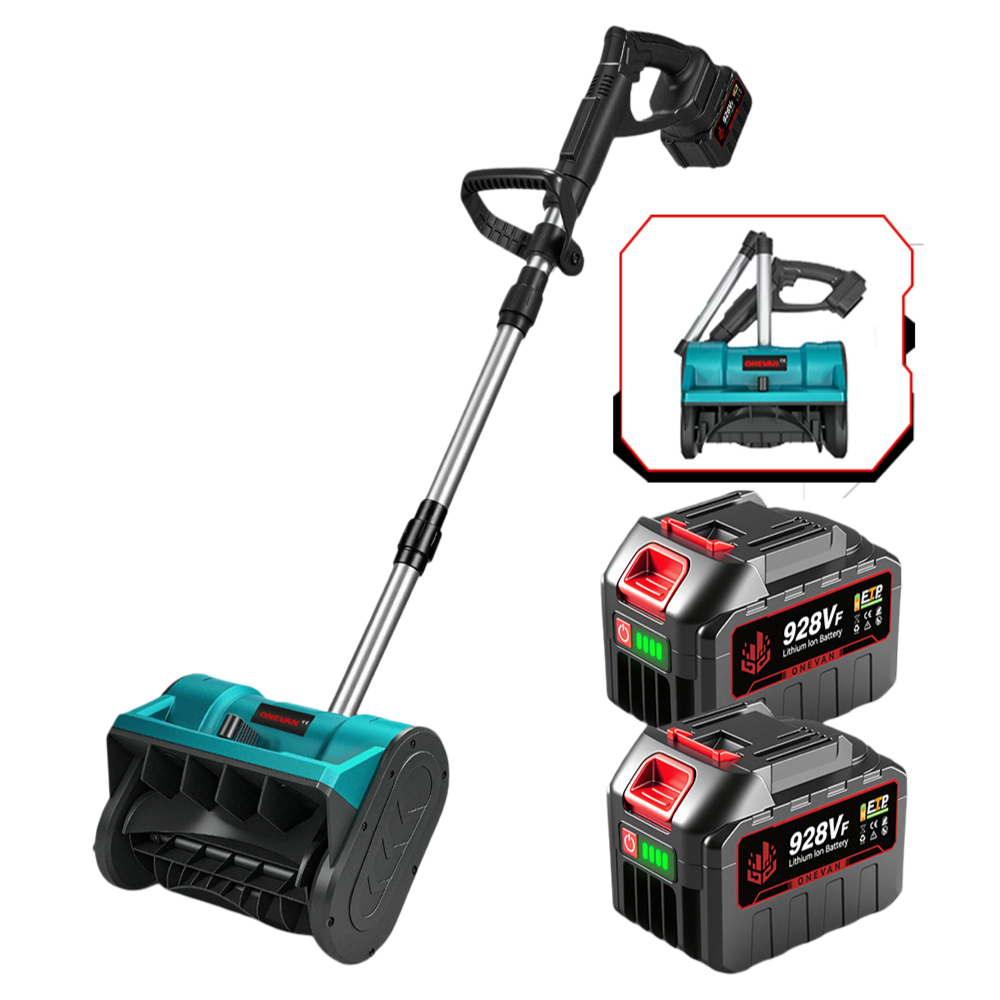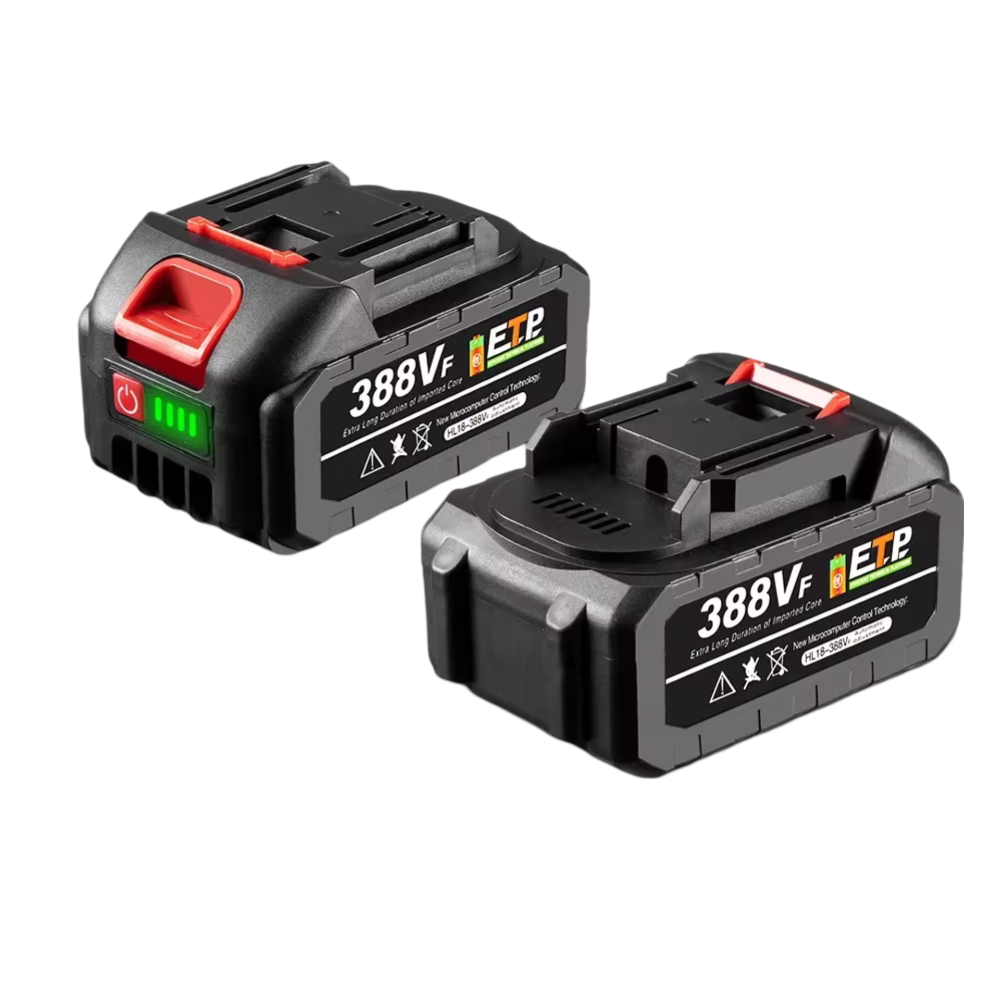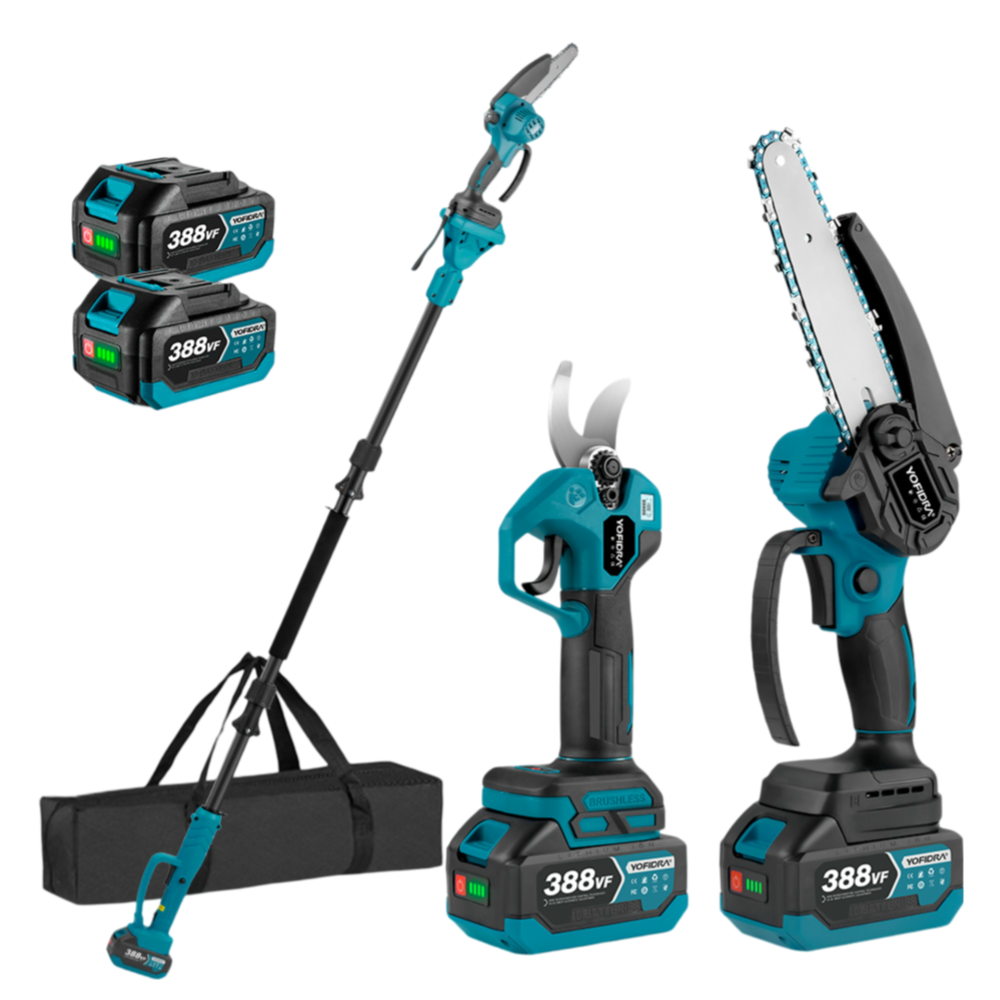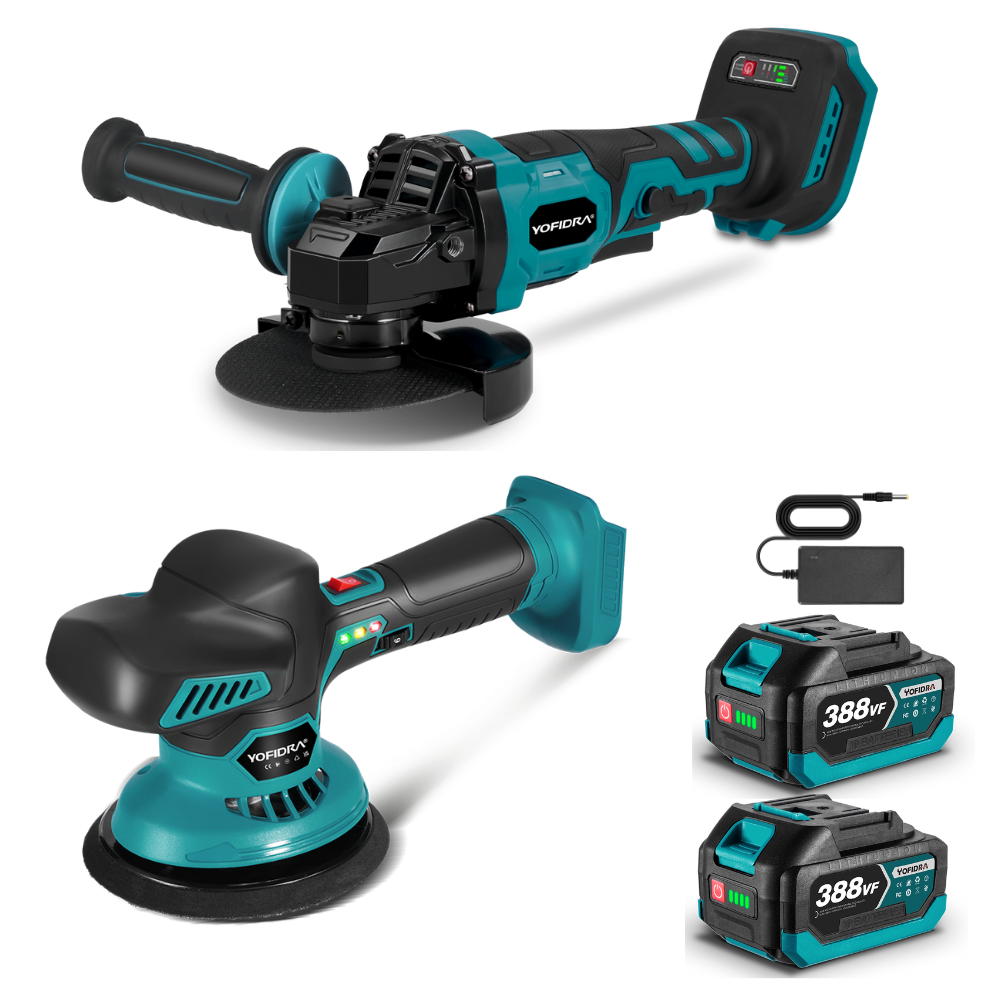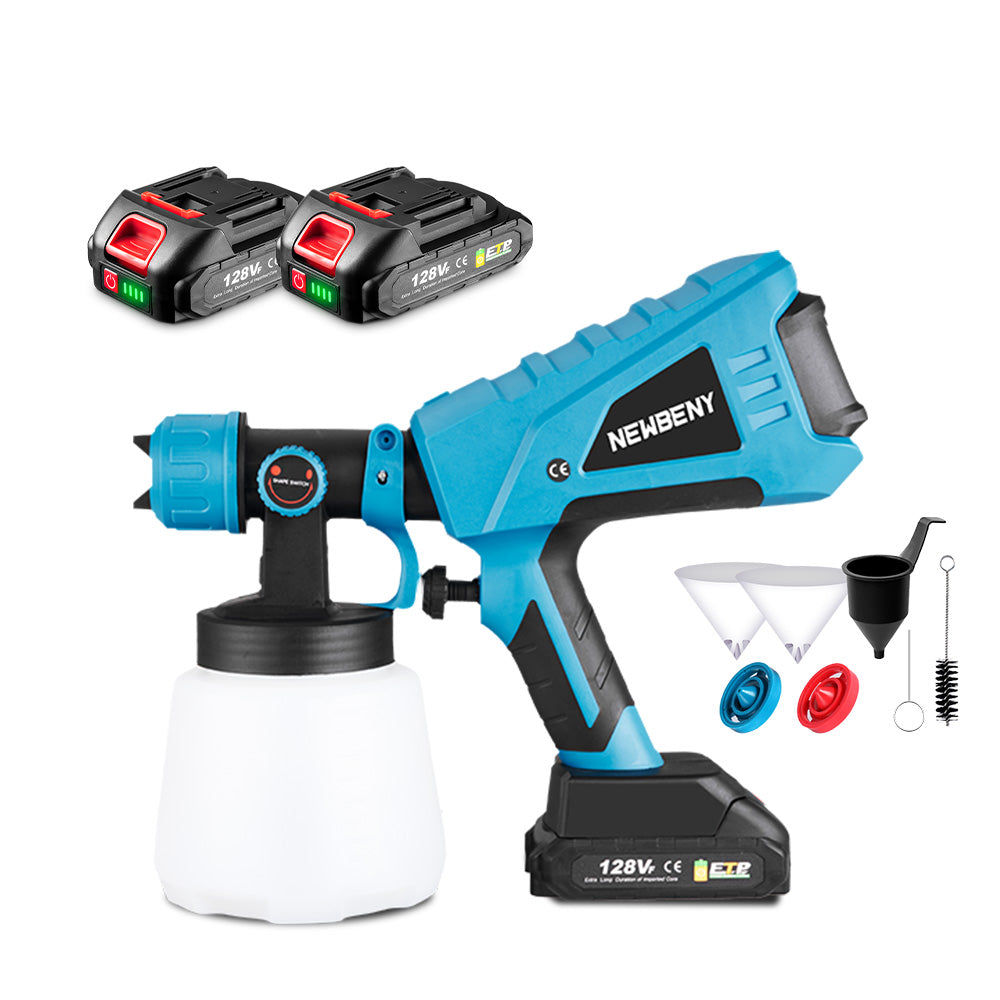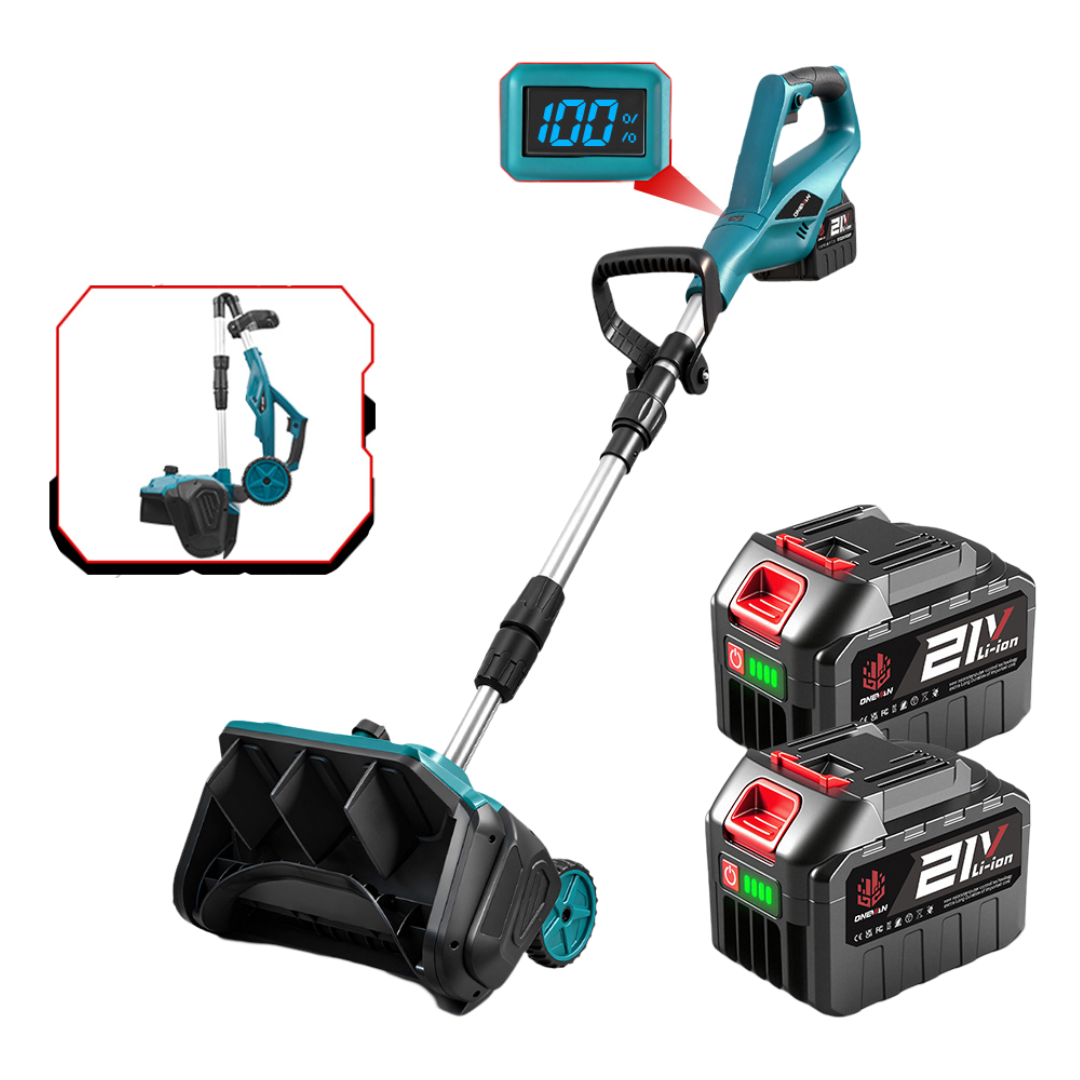Did you know your chainsaw's bar length matters more than the voltage for most home tasks? Here's how to pick the best cordless chainsaw size for your needs. From pruning to firewood, learn why bar length—not voltage—is the key to efficiency. I've been using cordless chainsaws for over 15 years, so getting the right bar size will save you time, effort, and money.
1. Why Bar Length Matters: Match Your Chainsaw to the Task
I remember buying my first chainsaw - I went straight for the biggest one I could afford. Big mistake! I wound up with a heavy beast that was excessive for my small yard work. After that expensive lesson, I learned that different jobs need different bar lengths.
Think of it like kitchen knives - you wouldn't use a bread knife to peel an apple, right? Same with chainsaws. The bar length affects cutting speed, precision, and the level of fatigue experienced in your arms.
6-Inch Bar: Precision in Tight Spaces
For small jobs in cramped spots, a 6-inch bar is my go-to. These little guys are perfect for getting into tight spaces where bigger saws just won't fit. I use my 6-inch cordless chainsaw for:
- Trimming thin branches (3 inches or less)
- Cleaning up overgrown hedges
- Basic yard pruning
- DIY wood crafts
Last summer, I had to trim around our gazebo where branches were growing through the lattice-work. I knew bigger saws wouldn't fit, so I used a 6-inch saw. It did the job perfectly and made clean cuts without damaging the structure.
These compact saws are super lightweight at around 2-3 pounds, so you can use them one-handed if needed. One of the main advantages of a 6-inch bar-size cordless chainsaw is that you can use it in tight spaces without any discomfort.
Remember, though, these small saws have limitations. Attempting to cut anything over 4 inches with a 6-inch bar is inefficient and can damage the motor.
The Newbeny 6-inch cordless chainsaw weighs only 0.8kg with a lithium battery. It's perfect for one-handed use. The 6-inch saw works great for trimming hedges and DIY wood crafts. It easily cuts branches up to 3 inches thick. The brushless motor delivers strong performance while maintaining a compact size. It's ideal for shaping ornamental trees and working in tight spaces.
8-Inch Bar: Versatile Backyard Buddy
Now we're talking about the very convenient bar size of cordless chainsaws. If I could only own one saw, it might be an 8-inch. These are ideal for common household tasks. I use my 8-inch cordless chainsaw for:
- Pruning fruit trees
- Cutting branches up to 6 inches thick
- General yard cleanup
- Small firewood prep
Newbeny 8-inch cordless chainsaw is about 1 kg with a lithium battery(approximately 2.2 pounds); these saws hit the ideal spot between power and weight. You can work for an hour without feeling itchy arms.
My neighbor has an apple orchard with about 20 trees and uses an 8-inch exclusively. It's light enough to reach up into the canopy but strong enough to slice through those 3-4 inch branches with no problem.
The 8 inch cordless chainsaw is also great for camping trips when you need to process kindling and small firewood. I keep mine in the truck during periods of frequent storms to quickly clean fallen branches.
If you are new to chainsaws or require one for occasional use, an 8-inch bar is likely the most suitable choice. It handles most home jobs, and it is also affordable and lightweight.
12-Inch Bar: Storm Cleanup & Medium Logs
The 12-inch cordless chainsaw is where we start getting serious. This is my most-used size for regular property maintenance and bigger projects. I reach for my 12-inch cordless chainsaw when:
- Cleaning up after storms
- Cutting logs up to 10 inches across
- Processing medium firewood
- Taking down small trees
The 12-inch cordless chainsaw is still manageable for longer periods but packs enough punch for tougher jobs.
After a big windstorm last year, I had three maple branches down - each about 8 inches thick. My 12-inch saw powered through them in under an hour. The same job would have taken all day with a smaller saw.
The 12-inch size also works well for limbing fallen trees. You achieve sufficient reach to maintain proper posture while avoiding situations where the saw becomes unwieldy.
For most homeowners with properties under an acre, a 12-inch bar provides an ideal compromise between power and usability. It's powerful enough for occasional big jobs but not overkill for everyday tasks. If you want to buy a 12-inch cordless chainsaw, you can consider Newbeny, which only weighs about 2kg with a lithium battery (about 4.4 pounds).
16-Inch Bar: Heavy-Duty Yard Master
For serious work, the 16-inch bar is the best choice. This is the closest a cordless saw gets to competing with gas models. I use my 16-inch cordless chainsaw for:
- Cutting logs up to 14 inches thick
- Processing hardwood firewood
- Felling small to medium trees
- Major storm cleanup
Many 16-inch cordless chainsaws on the market are relatively heavy, but there are also lighter ones, such as Newbeny's 16-inch cordless chainsaw just 3kg with a lithium battery (approximately 6.61 pounds), which is relatively light and more suitable for longer use. They're heavier than 12-inch cordless chainsaws, but that extra weight provides stability for bigger cuts.
Last winter, I dropped three dead ash trees (about 10 inches at the base) and cut them into firewood with my 16-inch saw. The battery lasted through a whole tree before needing a swap. I was amazed - that's work I used to think only gas saws could handle.
The downside? These larger saws can become exhausting to operate over extended periods, especially when used overhead. The batteries are also larger and more expensive, so budget accordingly.
If you heat your home with wood or manage a large property with mature trees, investing in a 16-inch cordless saw is a wise decision. For most homeowners, though, it's probably more saw than you need.

2. Factors to Consider When Choosing a Cordless Chainsaw
After choosing your bar size, there are a few other things to think about:
Power Source
Battery voltage is like horsepower in a car—higher numbers mean more cutting power. 20V systems work fine for casual use. For tougher jobs, look for 40V and up.
Battery capacity (measured in Ah) determines runtime. A 5Ah battery lasts roughly twice as long as a 2.5Ah battery. I always keep at least two batteries so one can charge while using the other.
Pro tip: Many brands use the same batteries across their cordless tools. If you already have battery-powered tools, check if their batteries work with their chainsaws, too. I saved hundreds by sticking with one brand for all my yard tools.
Weight and Portability
A lightweight saw that you will use is preferable to a heavy one that remains unused. Remember that the weight listed for the Newbeny cordless chainsaw in the article includes the lithium battery, and without the lithium battery, the weight would be about 1 pound less.
After buying a saw that gave me tennis elbow after just 30 minutes of use, this experience taught me a valuable lesson. Now, I always 'test hold' a saw before purchasing.
For overhead cutting (like pruning trees), every ounce matters. You might be better off with a smaller, lighter saw, even if it means making more cuts.
Safety Features
Don't skimp on safety! Good cordless chainsaws should have the following:
- Chain brake to stop the chain instantly if a kickback occurs.
- Handguard to protect against flying debris.
- Safety lockout switch to prevent accidental starts.
- Low-kickback chain design.
Years ago, I had a close call when a saw kicked back toward my face. The chain brake saved me from a nasty injury. Now, I won't touch a saw without one, no matter how good the deal seems.

3. Maintenance Tips for Your Cordless Chainsaw
Take care of your saw, and it'll take care of you. Here's what I do to keep mine running smoothly:
Routine Maintenance
After every use:
- Clean debris from the bar groove and sprocket
- Check chain tension (should be snug but able to pull around by hand)
- Top off bar oil
Monthly:
- Remove and clean the bar.
- Sharpen the chain or replace it if damaged.
- Check battery contacts and clean them if needed.
I keep a small maintenance kit with my saw for quick fixes in the field. Five minutes of maintenance saves hours of frustration later.
Storage Tips
Never store your saw dirty! Clean it first, then:
- Please remove the battery and store it at room temperature (extreme heat or cold shortens battery life).
- Empty the oil reservoir if storing long-term.
- Put the bar cover on to protect the chain.
- Store in a dry place away from kids and pets.
I became aware of proper battery storage practices after inadvertently leaving one in my unheated shed throughout the winter. By spring, it wouldn't hold a charge at all - an expensive mistake!
4. Troubleshooting Common Issues with Your Cordless Chainsaw
It appears you are experiencing difficulties with your cordless chainsaw. I understand that issues can be frustrating. Allow me to provide a systematic overview of troubleshooting procedures for the most common malfunctions.
Dull Chain
If you're cutting and notice you're getting sawdust instead of wood chips, your chain is dull. When a chain is sharp, it throws out chunks, not fine dust. You'll also notice you have to push harder to get through the wood.
You've got two options here: sharpen it yourself or replace it. If you're comfortable with a chainsaw file, you can touch up the cutters yourself. Each tooth needs about 5-6 strokes with the right size file (usually 5/32" or 3/16" depending on your chain). Make sure you hit every tooth at the same angle (usually 30-35 degrees).
If you've never sharpened a chain before, just grab a new one. They're inexpensive, and a sharp chain makes cutting much easier. I keep at least two chains for my saw to swap them out in the field when one gets dull.
Weak Cutting Power
When your saw seems to be running but lacks power, the first thing to check is your battery charge. Even if the battery shows some juice, it might not have enough voltage to handle tough cuts.
This happens to me all the time—I think the battery is charged because the saw runs, but it's actually at 15% power. Try a freshly charged battery and see if that solves your problem.
Also worth checking: Is your chain tension correct? If it's too tight, the motor has to work extra hard. The chain should be snug against the bar but still easily pull around by hand (with the battery removed, of course!).
Chain Stops During Cuts
This usually means your motor is overheating and engaging its thermal protection. The saw stops to prevent damage.
When this happens to you, take a break for 10-15 minutes. Let the saw cool down completely before trying again. I usually switch to another task or grab a cold drink while waiting.
What causes overheating? Usually, it's:
- Cutting wood that's too hard or thick for your saw.
- A dull chain makes the motor work harder.
- Operating in hot weather.
- Continuous cutting without breaks.
Working in 15-20 minute sessions with short breaks in between keeps my saw running smoothly, especially on hot days.
Oil Leaking When Stored
Found a puddle of oil under your stored chainsaw? Don't panic—this is normal for many cordless models. The bar oil seeps out slowly through the oiler when the saw sits unused.
If you won't be using the saw for more than a few weeks, you can minimize this by emptying the oil reservoir. Otherwise, store your saw on an old towel or in a shallow container to catch the drips.
I keep my saw in an old cookie sheet in the garage—it catches any oil and keeps my shelves clean. Some folks hang their saws, which can help reduce leaking since the oil has to fight gravity to escape.
Forcing Excessive Force During Cuts
The biggest mistake I see new chainsaw users make is trying to muscle through cuts. If you're pushing hard on your saw, something's wrong!
A properly functioning chainsaw with a sharp chain should cut with very little pressure from you. Your job is just to guide it—the saw does the work. If you find yourself leaning into the saw or pressing down hard, stop and check:
- Is your chain sharp? A dull chain makes you work harder.
- Are you cutting at the right angle? Let the bottom of the bar do the cutting when possible.
- Is the wood pinching the bar? This happens when cutting logs that aren't properly supported.
I once spent 10 minutes fighting with what I thought was a stubborn log, only to realize my chain was on backward after a maintenance session! Talk about embarrassing. When cutting correctly, the saw should feed itself into the wood.
5. Conclusion
Picking the right cordless chainsaw size can make yard work faster, safer, and more enjoyable. Remember: match the bar to the job. A 6-inch bar is for precision, an 8-inch bar is for versatility, a 12-inch bar is for medium jobs, and a 16-inch bar is for heavy stuff. Consider the whole package—weight, batteries, and safety features, too. With the right saw in hand, you'll wonder how you ever managed without one!
3. FAQ
Can a 6” chainsaw cut through thick branches?
Probably not for very thick branches. “It is better suited for smaller pruning jobs.
Is the 16” model too heavy for seniors?
It may be too heavy for some seniors, particularly during extended use.
Can the 12” model handle storm-damaged trees?
It can handle some storm damage, but it may struggle with very large or dense trees.
Which bar is best for DIY woodworking?
A shorter bar, for example, a 12" or 14", is generally easier to control for detailed work.
Can you store the chainsaw outdoors?
No, it should be stored indoors in a dry place to prevent rust and damage.










